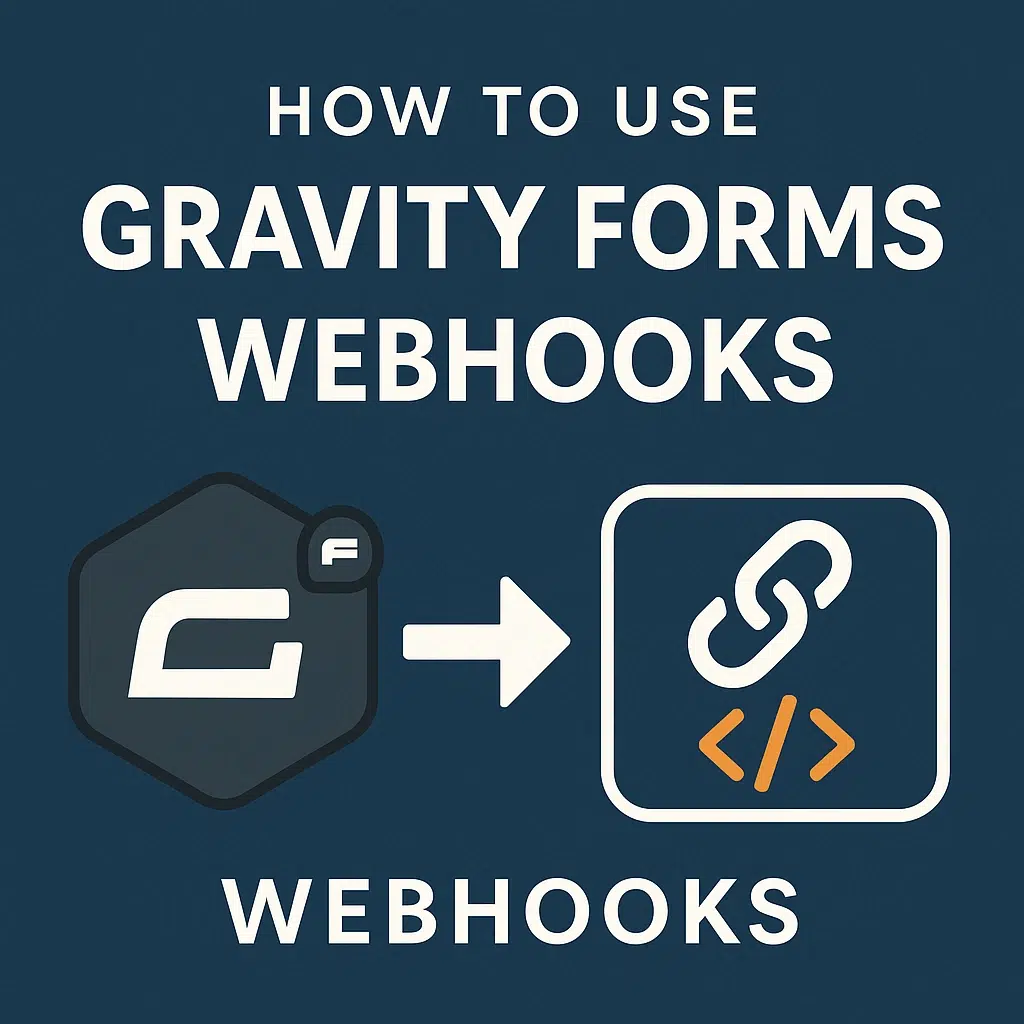If you’ve ever wanted to connect Gravity Forms to third-party apps or APIs, webhooks are your best friend. They let you send form data instantly to another service — no plugins or email notifications required.
🚀 What Is a Webhook?
A webhook is an HTTP request triggered by an event — in this case, a form submission. Gravity Forms sends the form data to a specified URL, often in JSON format.
🛠️ How to Enable Webhooks in Gravity Forms
- Make sure the Gravity Forms Webhooks Add-On is installed and activated (available with the Elite license).
- Go to
Forms → Settings → Webhookson the form you want to connect. - Click “Add New” and configure the settings.
Here’s a basic example of a webhook sending data to a POST endpoint:
POST https://api.example.com/submit-form
{
"name": "Jon Imms",
"email": "jon@example.com",
"comments": "Loving your Gravity Forms posts!"
}🔐 Adding Authentication Headers
Need to secure your endpoint with a Bearer token? Just add it in the “Request Headers” section:
Authorization: Bearer YOUR_SECRET_TOKEN📥 Capturing the Webhook (Custom Endpoint)
Want to receive Gravity Forms data inside your WordPress site? Register a custom REST endpoint like this:
add_action('rest_api_init', function () {
register_rest_route('myplugin/v1', '/webhook/', [
'methods' => 'POST',
'callback' => 'myplugin_handle_webhook',
'permission_callback' => '__return_true',
]);
});
function myplugin_handle_webhook($request) {
$data = $request->get_json_params();
error_log('Webhook received: ' . print_r($data, true));
return rest_ensure_response(['status' => 'received']);
}📤 Sending Webhooks After Submission (PHP)
If you want more control than the UI allows, you can send your own webhooks using PHP:
add_action('gform_after_submission_5', function ($entry, $form) {
$payload = [
'name' => rgar($entry, '1'),
'email' => rgar($entry, '2'),
'message' => rgar($entry, '3'),
];
$response = wp_remote_post('https://api.example.com/webhook', [
'headers' => [
'Authorization' => 'Bearer your-token',
'Content-Type' => 'application/json',
],
'body' => wp_json_encode($payload),
]);
if (is_wp_error($response)) {
error_log('Webhook failed: ' . $response->get_error_message());
}
}, 10, 2);🧪 Testing Tips
- Use Webhook.site or RequestBin to inspect payloads live.
- Check your browser console or logs for 403 errors (auth issues).
- Enable Gravity Forms logging under
Forms → Settings → Loggingto debug.
💡 Use Cases
- Send form leads to a CRM like Zoho or Salesforce
- Trigger automated emails or Slack messages
- Push support requests to HelpScout or Trello
Webhooks give you incredible flexibility — especially when paired with conditional logic or add-ons like Gravity Flow.
In future posts, I’ll go deeper into use cases like two-way sync, lead tagging, and webhook security best practices.


Leave a Reply